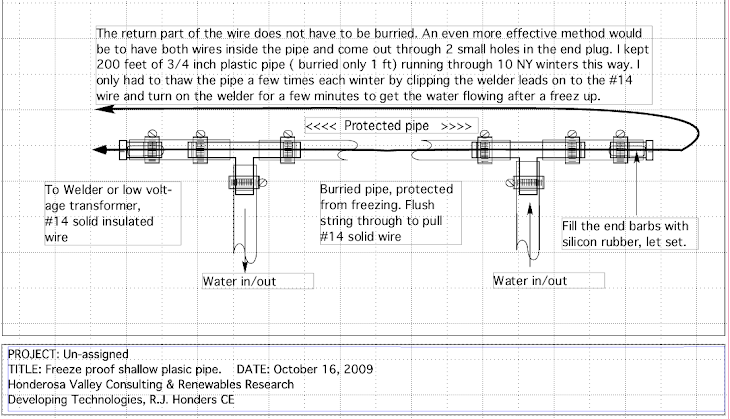 But why you ask. Well, some very few of us have extra electricity to burn. This can happen if you are lucky enough to be able to harness a waterfall. I had to install a replacement oil burner several years before finishing a power plant at the nearby waterfall. So as long as I had this used furnace apart to refurbish it I decided to install electric heating elements in anticipation of all the free electricity. The pictures show the basics. If you want to use 3 phase you will want to install 3 elements. Some furnaces are so compact that there might not be room for this. I installed the 2, 2000W 240V elements below the tank-less water heater ( the big round hole). I bought a couple of 4 bolt to screw in adapters at my local supply depot and drilled 2, 1.125 inch holes, each surrounded by 4, 5/16 inch holes tapped for 3/8 bolts to hold the adapter plates. The screw in elements cleared all the internal piping when screwed in to the adapters. The last picture shows the tank-less water heating coil and the outer sheet metal insulated covers for reference. So now I have a dual fuel furnace and I can use all the same radiators, pumps, and radiant floor heat. I still have to
But why you ask. Well, some very few of us have extra electricity to burn. This can happen if you are lucky enough to be able to harness a waterfall. I had to install a replacement oil burner several years before finishing a power plant at the nearby waterfall. So as long as I had this used furnace apart to refurbish it I decided to install electric heating elements in anticipation of all the free electricity. The pictures show the basics. If you want to use 3 phase you will want to install 3 elements. Some furnaces are so compact that there might not be room for this. I installed the 2, 2000W 240V elements below the tank-less water heater ( the big round hole). I bought a couple of 4 bolt to screw in adapters at my local supply depot and drilled 2, 1.125 inch holes, each surrounded by 4, 5/16 inch holes tapped for 3/8 bolts to hold the adapter plates. The screw in elements cleared all the internal piping when screwed in to the adapters. The last picture shows the tank-less water heating coil and the outer sheet metal insulated covers for reference. So now I have a dual fuel furnace and I can use all the same radiators, pumps, and radiant floor heat. I still have to  install a flue damper so less heat is wasted going up the chimney when using electricity to heat. Don't forget to replace the high temp liner in the burner cavity.
install a flue damper so less heat is wasted going up the chimney when using electricity to heat. Don't forget to replace the high temp liner in the burner cavity.As a side story , I installed an 80 gal electric hot water heater and use this as an energy storage tank for my excess electricity. The elements in this water heater are fed electricity by a controller that monitors the line voltage. If the line voltage drops (say because the refrigerator starts up ) the controller instantly reduces the power to the water heating elements . This brings the voltage back up and makes the power available to the refrigerator. If nothing else needs the power the controller will allow the water to heat up . When the water gets to a temperature just below where the water heater would shut off (and we would lose our voltage regulator), a small circulator pump will come on and circulate the hot water through the tank-less heating coil in the furnace thus dumping heat into the furnace to heat the house and using the tank-less heating coil in reverse. All this can go on independently of weather you are burning oil or electricity in the furnace. If you have no electricity to burn but lots of oil you could heat the 80 gal of domestic hot water with this same circulator pump / tank-less-coil / water heater tank loop.















